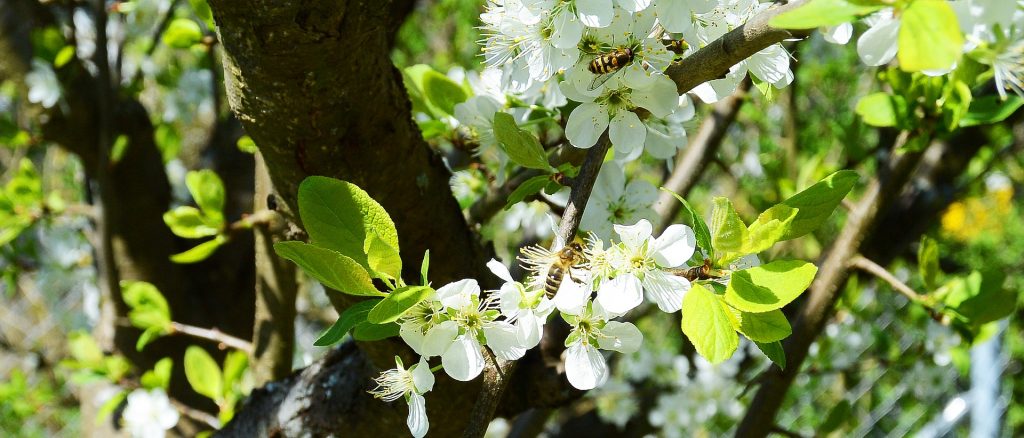
Bee pollination plays an essential role in our world’s ecosystem. Many plants rely on pollination to thrive, but various environmental issues are causing population drops for these important insects. There are ways for individuals to help them, however, and it all starts with your own home garden.
How does cross-contamination impact our food supplies?
Cross-pollination is where pollen from the flower of one plant fertilizes the flower of another plant. According to the Natural Resources Defense Council, cross-pollination helps about 90 percent of our wild plants and around 30 percent of the crops we rely on around the world. This process can take place with the help of wind, bats, beetles, butterflies, and birds, but bees are one of the most effective pollinators around.
Agriculture Solutions explains that human nutrition, food diversity, and food security all rely on pollinators and the cross-pollination fertilization process is essential in producing strong plants and high yields of fruits and vegetables. The process helps provide genetic variability within a plant’s population, allowing it to better adapt as conditions change.
This process leads to changes in plants over time
Cross-pollination is responsible for many different varieties of plants we have today. Gardener’s Network points out that tomatoes, roses, and pumpkins are all great examples of plants that have benefited greatly from this process, and apples rely heavily on it too. Without cross-pollination, we could have been stuck with one color of rose, one type of apple, or a single kind of tomato.
Botanists regularly utilize cross-pollination to enhance specific traits within different plants. For example, they may use the process to make something sweeter, more resistant to disease, bigger, or grow in a different color. Cross-pollination has been done extensively with corn, and this is how the “pluot,” a hybrid of an apricot and a plum, came to be as well.
Gardeners see cross-pollination occur frequently in varieties within the same species. In addition to the many varieties of apples that have developed due to this process, it is common among different varieties of squash like zucchini, miniature gourds, and acorn squash. However, cross-pollination does not work across different species, like between a melon and a cucumber.
How do you account for cross-contamination in your home garden?
Why do beginning gardeners need to understand cross-pollination? You do need to be aware of how this process impacts the plants you put in your garden, especially if you are hoping to save seeds from one season to use the following year. If you have a small space and plant both green peppers and hot peppers that cross-pollinate, for example, you will notice a difference in your peppers the following year if you use the seeds that develop.
Some gardeners embrace the changes that can take place thanks to cross-pollination, while others will want to choose varieties specifically to prevent issues. For example, to avoid having this process generate changes to your fruits or vegetables, stick with one kind of pepper, one kind of squash, and so on. You can also focus on growing items that tend to self-pollinate, such as beans, peas, and lettuce.
Home gardening is a great way to help bees as they struggle with concerning population declines. Even a small garden at home can be engineered to attract and support the bees, but you do want to be aware of how cross-pollination may affect your choices. With a bit of planning and effort, you can develop a thriving garden space that also supports your local bees.
